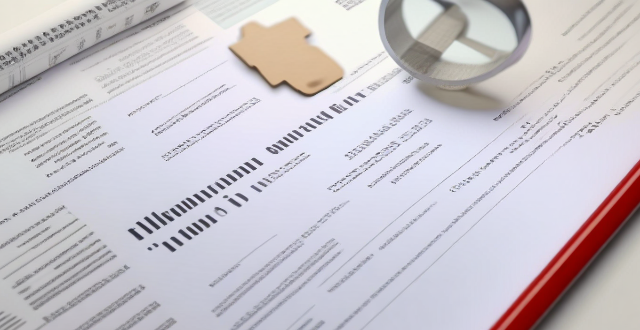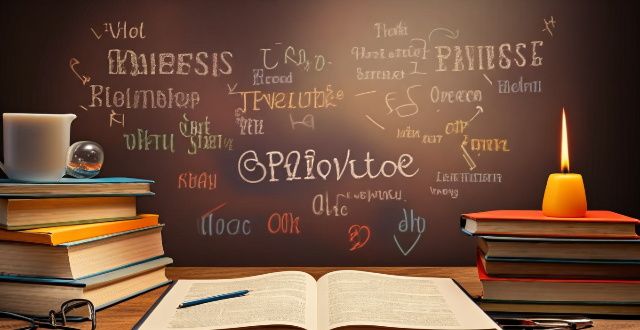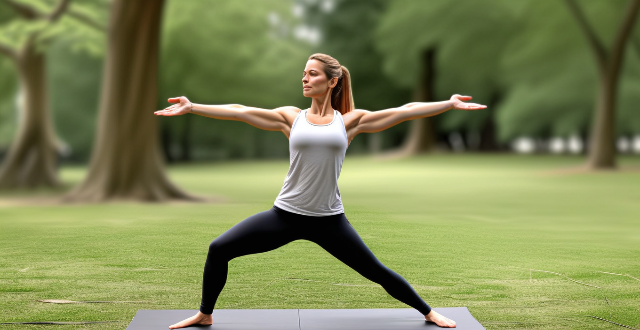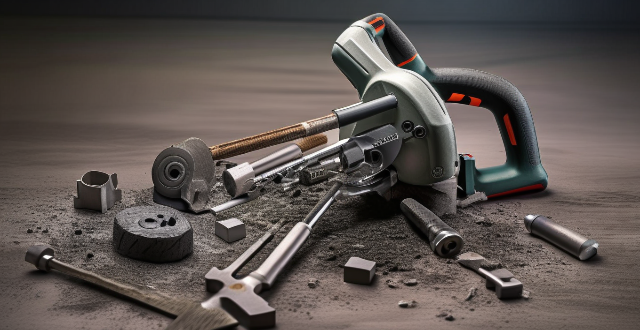Drill Practice

What is a safety drill and why are they important ?
A safety drill is a crucial practice session that simulates emergency situations to prepare individuals and organizations for potential emergencies by practicing evacuation procedures, using safety equipment, and following established protocols. Safety drills are important for several reasons: they familiarize people with emergency procedures, identify weaknesses in current plans, ensure compliance with regulations, maintain readiness, and promote a culture of safety.

What are the key steps in performing an earthquake drill at home ?
Earthquake drills are crucial for preparing your family to react quickly and safely during an actual earthquake. Here are the key steps to perform an effective earthquake drill at home: 1. **Preparation**: Inform family members about the purpose of the drill, assign roles, identify safe places, and secure objects. 2. **Drop, Cover, and Hold On**: Drop to your hands and knees, crawl to a safe place, and hold on until the shaking stops. 3. **Relocation Drill**: Practice evacuating safely, agree on a meeting spot, and check in with all family members. 4. **After the Drill**: Review performance, update the emergency plan, and stay informed about local warning systems. 5. **Repeat**: Conduct regular earthquake drills at least once every six months to keep procedures fresh in everyone's minds.

How can we measure the success of a safety drill ?
The article discusses the importance of evaluating safety drills to improve emergency response and preparedness. Key factors to consider include compliance with safety procedures, participant engagement, effectiveness of communications, availability and functionality of equipment and resources, and overall performance. By measuring the success of a safety drill, organizations can identify areas for improvement and ensure that their employees are well-prepared to handle emergency situations effectively.

Are there any specific exercises or drills for skill improvement in basketball/football/tennis, etc. ?
Topic: Skill Improvement Exercises and Drills in Basketball, Football, and Tennis Basketball: - Dribble the ball with alternating hands and in a figure 8 motion to improve ball handling skills. - Practice shooting free throws and spot shooting to enhance accuracy and consistency. - Work on lateral movement and closeout drills to improve defensive positioning and quickness. Football (Soccer): - Pass the ball against a wall and in a triangle formation to improve passing accuracy and touch. - Practice shooting at targets and receiving passes before shooting to enhance shooting accuracy and speed. - Work on marking and tackling drills to improve defensive skills and technique. Tennis: - Hit crosscourt groundstrokes and alternate forehand and backhand shots to improve accuracy and consistency. - Practice serving to targets and focusing on second serves to enhance serving reliability and placement. - Work on lateral movement and net approach drills to improve court coverage and net play.

What should be included in a safety drill report ?
In summary, a safety drill report is an essential document that provides a detailed account of the findings and outcomes of a safety drill conducted in an organization or facility. It includes key elements such as header information, purpose of the drill, participation details, drill procedures, performance assessment, findings & recommendations, and conclusion. The report also includes attachments and supporting documents such as photos/videos, attendance records, and emergency contact information. By incorporating these elements into a comprehensive safety drill report, organizations can effectively evaluate their readiness to handle emergencies and continuously improve their safety protocols.

How often should safety drills be conducted in the workplace ?
Regular safety drills are essential for maintaining a safe workplace. The frequency of these drills depends on the type of emergency and local regulations, but they should be frequent enough to keep employees prepared and confident in their ability to handle emergencies. Best practices for safety drills include creating realistic scenarios, encouraging employee involvement, gathering feedback, and documenting each drill.

How do safety drills help identify potential hazards in the workplace ?
Safety drills are crucial exercises to simulate and identify potential hazards in the workplace. They help highlight weak links in safety procedures, test equipment and infrastructure, enhance visibility of hazardous areas, train for unexpected circumstances, and promote a culture of safety. By conducting regular drills, organizations can reduce accidents and ensure a safer environment for employees.

Are there any specific exercises or stretches that can help improve my golf game ?
Golf improvement through specific exercises and stretches, including core strengthening exercises like plank and Russian twists, flexibility and mobility stretches such as hamstring and hip flexor stretches, and putting practice drills like the line and gate drills to enhance precision and control.

What are some effective ways to practice social distancing in daily life ?
Effective ways to practice social distancing include staying at home as much as possible, keeping a safe distance from others, wearing a mask or face covering in public, washing hands frequently, cleaning and disinfecting high-touch surfaces, and following respiratory etiquette. These practices can help slow the spread of infectious diseases and protect individuals and communities.

What is the best way to practice speaking a new language ?
The article provides a summary of the best ways to practice speaking a new language, which include immersing oneself in the language, speaking frequently and without fear of making mistakes, practicing regularly, focusing on pronunciation and fluency, and learning through real-life conversations. Consistency and practice are emphasized as key factors in improving language skills.

What is the best time of day to practice yoga poses ?
Yoga offers numerous benefits for both the body and mind. The best time of day to practice yoga poses varies from person to person, depending on individual schedules, preferences, and needs. Morning sessions can kickstart metabolism and improve mental clarity, midday practices can relieve stress and rejuvenate the body, while evening yoga can help relax and prepare for sleep. Consistency is key in any yoga practice, so find what works best for you and maintain regularity for optimal results.

How do professional athletes train and practice ?
Professional athletes engage in comprehensive training and practice routines to excel in their sports. Their regimens include physical conditioning through cardiovascular exercises, strength training, and flexibility practices. They also focus on technical skill development through repetitive drills, scrimmages, video analysis, and virtual reality training. Mental preparation is equally important, involving visualization techniques and sports psychology consultations. Recovery and regeneration strategies encompass proper nutrition, sleep habits, and active recovery methods like light exercise and massage therapy. These components all work together to ensure athletes reach peak performance while minimizing the risk of injury.

How often should I practice easy yoga poses to see results ?
The article discusses how often one should practice easy yoga poses to see results. Consistency is crucial, and beginners should aim for two to three times per week while intermediate practitioners can increase frequency to four or five times per week. Advanced practitioners may benefit from practicing six or seven times per week but should listen to their body and rest when needed. Quality is more important than quantity, and tips for maximizing your yoga practice include mixing up poses, using props, staying present, and practicing mindfulness.

How often should I practice to see improvement in my golf skills ?
Golf improvement requires consistent practice, and the frequencyGolf improvement requires consistent practice, and the frequency your skill level, goals, and the frequency of your sessions depends on your skill level, goals, and availability. Assess your current skill level and set realistic goals to create a practice plan that includes both on-course and off-course activities. Beginners should aim for at least three practice sessions per week, while intermediates can do two to three and advanced players one or two. Make each session count by focusing on specific goals and tracking progress. Consistency is key, so stick to your practice plan and adjust it as needed based on your progress.

Can sports be considered a form of worship or spiritual practice ?
The provided text discusses the possibility of considering sports as a form of worship or spiritual practice. It explores the psychological and emotional benefits, community building, and mindfulness aspects of sports, suggesting that they offer experiences similar to those found in traditional spiritual practices. While sports may not be seen as a conventional form of worship, they can serve as a secular equivalent of spiritual practice, offering personal growth, connection, and inner peace.

How many times a week should I practice yoga poses to see results ?
Practicing yoga poses is an excellent way to improve your flexibility, strength, and overall well-being. However, the frequency of your practice can greatly impact the results you achieve. In this article, we will discuss how many times a week you should practice yoga poses to see noticeable improvements in your physical and mental health. Before determining the ideal number of yoga sessions per week, it's essential to consider several key factors: your current fitness level and experience with yoga, the amount of time you can dedicate to each session, and your specific goals (e.g., increased flexibility, stress relief, muscle building). By taking these factors into account, you can create a personalized yoga routine that suits your needs and helps you achieve your desired outcomes. For beginners, starting with two or three sessions per week is generally recommended. This allows your body to gradually adapt to the postures and prevents overexertion or injury. As you become more comfortable with the practice, you can gradually increase the frequency of your sessions. Once you have established a consistent yoga practice and gained some experience, increasing the frequency of your sessions can help you continue to see progress. For intermediate practitioners, aiming for four to five sessions per week is often beneficial. This allows you to maintain your current level of flexibility and strength while also challenging yourself to try more advanced postures and sequences. Advanced yogis who have been practicing for several years may choose to practice daily or even multiple times per day. This level of commitment requires a significant amount of time, discipline, and dedication but can lead to profound transformations in both physical ability and mental clarity. Regardless of how frequently you choose to practice yoga poses, there are several tips that can help you maximize the benefits of your sessions: set clear goals, mix up your routine, stay hydrated, and listen to your body. By following these guidelines and adjusting your frequency based on your individual needs and goals, you can create a yoga practice that leads to lasting improvements in both your physical and mental well-being.

How important is hands-on practice in personal safety training compared to theoretical knowledge ?
In today's world, personal safety training is crucial to ensure individuals can protect themselves from potential threats and risks. While theoretical knowledge provides a foundation for understanding these risks, hands-on practice is essential for effective training. Hands-on practice provides a realistic experience that allows individuals to apply what they have learned in real-life situations. It also helps develop skills that can be applied across various scenarios, reinforces learning, and builds confidence. Therefore, incorporating hands-on practice into personal safety training programs is crucial for individuals to develop the skills needed to respond appropriately to threats and risks in real-life situations.

What are the best practices for emergency response ?
In the face of emergencies, a well-prepared and effective response can significantly mitigate damages and save lives. This article outlines the best practices for emergency response to ensure that organizations and communities can react swiftly and appropriately in times of crisis. These include preparation and planning, communication protocols, training and drills, and resource allocation. By following these practices, organizations can enhance their resilience and ability to manage crises effectively.

Can you provide examples of different types of safety drills ?
Safety drills are essential exercises designed to prepare individuals and organizations for emergencies. They help ensure that everyone knows what to do in case of an unexpected event, reducing the risk of injury or loss of life. Here are some examples of different types of safety drills: 1. Fire Drills: Alerting occupants of the building by sounding alarms, guiding them to exit routes and assembly points, ensuring that all areas are cleared, conducting a headcount to account for all individuals. 2. Earthquake Drills: "Drop, Cover, and Hold On" procedure to protect oneself from falling objects, evacuating the building only if it is safe to do so, knowing how to turn off utilities like gas and water to prevent further damage. 3. Active Shooter Drills: Knowing the "Run, Hide, Fight" strategy, how to report an active shooter situation to authorities, safe evacuation techniques without drawing attention to oneself. 4. Chemical Spill or Hazmat Incident Drills: Proper use of personal protective equipment (PPE), safe evacuation procedures, reporting the incident to emergency services, decontamination procedures for those who may have been exposed. 5. Medical Emergency Drills: Basic Life Support (BLS) and CPR techniques, use of automated external defibrillators (AEDs), first aid kit usage and management of injuries until professional help arrives.

How can we ensure employee participation during safety drills ?
Strategies for ensuring employee participation during safety drills include clearly communicating the importance of these exercises, making them engaging and interactive, offering incentives for participation, and creating a supportive workplace culture. By implementing these strategies, employees are more likely to actively participate in safety drills, leading to improved preparedness for emergencies and a safer workplace overall.

How can I improve my reaction time and agility in sports ?
Reaction time and agility are essential components of athletic performance, determining how quickly an individual can respond to a stimulus and move their body effectively. To improve these skills, one should practice specific drills such as the reaction time ladder, cone weave, and box jumps. Incorporating strength training exercises like squats, lunges, deadlifts, and plyometric exercises can also enhance overall athleticism. Additionally, focusing on flexibility and mobility through stretches and foam rolling can reduce the risk of injury and improve range of motion. By implementing these strategies, individuals can enhance their reaction time and agility in sports.

What role do safety drills play in emergency preparedness ?
Safety drills play a pivotal role in emergency preparedness by raising awareness, practicing response skills, building teamwork, assessing readiness, and ensuring compliance with regulations. They familiarize individuals with procedures, identify hazards, enhance key skills like evacuation and first aid, foster coordinated responses, develop leadership, reveal gaps for improvement, and meet legal standards, ultimately creating a culture of safety.

Can regular practice with comprehension quizzes help in improving understanding ?
Regular practice with comprehension quizzes can improve understanding by enhancing reading skills, critical thinking, vocabulary, concentration, and confidence.

What tools do I need for basic home repairs ?
Basic Home Repairs Toolkit: Essential Tools for Common Household Tasks When it comes to basic home repairs, having the right tools is essential. Here are some of the most important tools you should have on hand for common household tasks: 1. Screwdrivers: Flathead and Phillips head screwdrivers for general use and assembling furniture. 2. Pliers: Needle-nose and slip-joint pliers for gripping and bending wires and cutting and gripping various materials. 3. Wrenches: Adjustable wrench and crescent wrench set for tightening and loosening nuts and bolts of various sizes. 4. Hammer: Claw hammer for driving nails and removing them from wood. 5. Tape Measure: Retractable tape measure for measuring distances and ensuring accuracy in cuts and installations. 6. Level: Torpedo level and carpenter's square for checking if objects are horizontally level and angles are square and true. 7. Handsaw: Hacksaw and keyhole saw for cutting through metal, plastic, or wood and making small, precise cuts in drywall or wood. 8. Drill/Driver: Cordless drill/driver with assorted drill bits and screw tips for drilling holes and driving screws into various materials. 9. Staple Gun: Manual staple gun for upholstery, fabric, and light duty fastening tasks, and electric staple gun for heavy-duty fastening tasks like installing flooring or ceiling tiles. 10. Utility Knife: Retractable utility knife for cutting open boxes, trimming materials, or scoring surfaces before snapping them apart. By having these basic tools on hand, you can tackle many common home repair projects with confidence and efficiency. Remember to keep your tools organized, clean, and properly maintained for safe and effective use.

Are there any interactive platforms where I can practice programming skills ?
Interactive Platforms for Programming Practice: - Codecademy offers free courses, advanced paid lessons, and project building. - LeetCode provides coding problems, discussion forums, and contests. - HackerRank presents coding challenges across various tech domains. - Exercism features multilingual exercises with mentor support and community interaction. - Repl.it is a cloud-based IDE with multi-language support, collaboration options, and templates.

How does meditation or mindfulness practice contribute to creative development ?
Meditation and mindfulness practices can significantly foster creativity by enhancing attention, increasing awareness, reducing mental clutter, promoting emotional regulation, stimulating neurological growth, fostering a growth mindset, improving sleep quality, encouraging self-reflection, providing incubation time, and enhancing collaboration. Incorporating these practices into daily routines can help individuals unlock their full creative potential, leading to personal growth and innovation in various fields.

How does poor time management contribute to test anxiety ?
Poor time management significantly contributes to test anxiety by causing insufficient preparation, lack of practice, rushed review, fatigue, heightened pressure, diminished confidence, and mental health implications. To mitigate these effects, students should create a study timetable, establish regular study habits, ensure proper breaks and sleep, maintain a healthy lifestyle, and practice mindfulness and relaxation techniques.